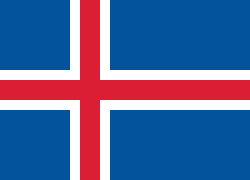Nuclear Energy Agency

Nuclear Energy Agency (NEA) är en samarbetsorganisation för atomenergifrågor inom OECD. Organisationen grundades 1 februari 1958 under namnet European Nuclear Energy Agency (ENEA). Namnet ändrades 20 april 1972 efter att Japan hade blivit medlem. Organisationens syfte är att bidra till att göra atomenergin till en säker och miljövänlig energikälla.
NEA har (2023) 34 medlemsländer från Europa, Nordamerika och Asien. År 2021 skedde den senaste utökningen då Bulgarien blev medlem.[1] År 2022 uteslöts Ryssland som medlem med anledning av Rysslands invasion av Ukraina.[2]
Medlemsländerna representerar cirka 85% av världens installerade reaktorkapacitet.
Organisationen arbetar inom följande områden:
- Nuclear safety and regulation
- Nuclear energy development
- Radioactive waste management
- Radiation protection and public health
- Nuclear law and liability
- Nuclear science
- Data bank
- Information and communication
- European Nuclear Energy Tribunal
Medlemsländer
 Argentina
Argentina Australien
Australien Belgien
Belgien Danmark
Danmark Finland
Finland Frankrike
Frankrike Grekland
Grekland Irland
Irland Island
Island Italien
Italien Japan
Japan Kanada
Kanada Luxemburg
Luxemburg Mexiko
Mexiko Nederländerna
Nederländerna Norge
Norge Polen
Polen Portugal
Portugal Rumänien
Rumänien Ryssland (suspenderad 2022)
Ryssland (suspenderad 2022) Slovakien
Slovakien Slovenien
Slovenien Sydkorea
Sydkorea Spanien
Spanien Storbritannien
Storbritannien Sverige
Sverige Schweiz
Schweiz Tjeckien
Tjeckien Turkiet
Turkiet Tyskland
Tyskland Ungern
Ungern USA
USA Österrike
Österrike
Referenser
- ^ ”Bulgaria becomes the Nuclear Energy Agency's 34th member”. oecd-nea.org. https://www.oecd-nea.org/jcms/pl_52736/bulgaria-becomes-the-nuclear-energy-agency-s-34th-member.
- ^ ”Russia Suspended from OECD Nuclear Energy Agency”. www.foreignbrief.com. https://www.foreignbrief.com/daily-news/russia-suspended-from-oecd-nuclear-energy-agency/.
Externa länkar
Media som används på denna webbplats
The civil ensign and flag of Belgium. It is identical to Image:Flag of Belgium.svg except that it has a 2:3 ratio, instead of 13:15.
Författare/Upphovsman: Gutten på Hemsen, Licens: CC0
Flag of Norway with colors from the previous version on Commons. This file is used to discuss the colors of the Norwegian flag.
Flag of Portugal, created by Columbano Bordalo Pinheiro (1857–1929), officially adopted by Portuguese government in June 30th 1911 (in use since about November 1910). Color shades matching the RGB values officially reccomended here. (PMS values should be used for direct ink or textile; CMYK for 4-color offset printing on paper; this is an image for screen display, RGB should be used.)
The flag of Slovenia.
- "The construction sheet for the coat of arms and flag of the Republic of Slovenia
- is issued in the Official Gazette Uradni list Republike Slovenije #67, 27 October 1994
- as the addendum to the Law on the coat of arms and flag."

































